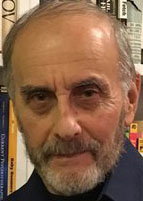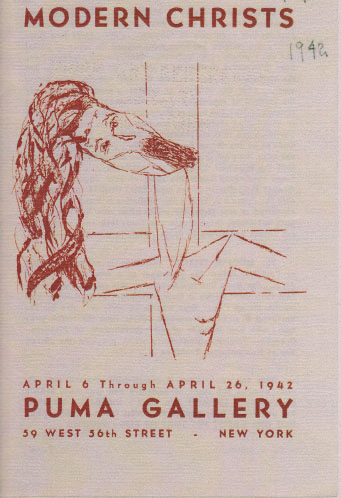Medieval and Renaissance artworks commonly Christianized Jesus , his family, and close
Recently, though, there have been efforts to correct the distortions and
misrepresentations in artworks. The 2011-2012 exhibit "Rembrandt and the Images of
Jesus," curated by the Louvre, the Philadelphia Museum of Art, and the
Detroit Institute of Arts featured Rembrandt's
The explosion of interest in the
The exhibit of Rembrandt's Jewish Jesus, which was more religion-neural than clearly Jewish, and the Chagall exhibit, which features his crucifixion paintings, represent steps in the direction of correcting the falsification of biblical history in the extensive collections of artworks that the public sees in Medieval and Renaissance galleries of museums around the world.
Chagall was not alone among nineteenth- and twentieth-century Jewish artists to create artworks of Jesus, and sometimes of a Jewish Jesus. Art scholar Ziva Amishai-Maisels explains that artists sought to address anti-Semitism:
"Faced with rising anti-Semitism throughout Europe and
pogroms in Russia from 1871 on, Jewish
Toward the same goal, Maurycy Gottlieb painted Jesus Preaching in the Synagogue at Capernaum (1879), in
which Jesus is wearing a
Later Jewish artists addressed the horrors of the Holocaust. In addition to
the works of Marc Chagall, most frequently cited is the 1942 exhibit
"Modern Christs" at the
Painters
1. Manfred Schwartz: Quo Vadis Domine?
2. Michel Georges-Michel: Christ Ecorche
3. Fred Nagler: Pieta
4. Max Weber: My Christ
5. Puma: The Savior
6. Sygmunt Menkes: Ecce Homo
7. Jean Charlot: Jesus Is Taken Down From the Cross
8. Rose Kuper: Christ Head
9. Harry Shoulberg: Christ
10. Max Beckmann: Descent From the Cross
11. Mane Katz: Now Ye are Brethren?
12. Byron Browse : Crucifixion
13. Nahum Tschgacbasov: Christ in Chaos
14. Adolph Gottlieb: Crucifixion
Sculptors
15. Hugo Robus: Betrayal
16. Anita Weschsler: Alone
17. Marek Schwarz: Mask Christ
18. Louise Nevelson: His Story
19. Louis Slobodkin: The Student Jesus
20. Elsa Schmid: St. Christopher
21. Jose De Creeft: The Great Semite
22. Minna Harkavy: Christ Head for Composition
23. Oronzio Malderelli: Flight Into Egypt
24. Lillian Landis: Head of Christ
25. Aristodimos Kaldis: Golgotha (In the catalogue this was listed
above with the painters)
26. Mrs. Stephen S. Wise: Crucifixion (This item was probably a late
addition to the exhibit since it was handwritten in the catalogue)
In many instances these artworks were probably not typical of the work of the artists who produced them. That may explain why it's challenging to find exhibits or other venues where the works may have appeared, or to even locate images of the pieces. Aside from Max Beckmann's, Descent from the Cross, many of the works in the Puma exhibit may be lost or are in private collections and not available to the public.
Other prominent Jewish artists not included in the Puma exhibition produced crucifixion images in the war years as outcries against the ongoing genocide of the Holocaust. In an untitled abstract expressionist rendition of the crucifixion (circa 1941-42) "Mark Rothko depicted not just one martyr or Jesus but a group of martyrs, their bodies unexpectedly and brutally hacked to pieces..." Emmanuel Levy's powerful painting, Crucifixion--Jude (1941), shows the anguished rage of a Jew nailed to the cross; his talit and tefillin straps are waving in a posture of protest.
As impressive as these various exhibits and individual artworks may be in calling attention to Jesus' Jewish identity, they are too few to correct the distortions and omissions in artworks that influenced the perceptions of Jesus by generations of Christians and Jews over many centuries--and still today in the collections of Medieval and Renaissance artworks in the permanent collections of museums.
(Note: You can view every article as one long page if you sign up as an Advocate Member, or higher).






